Family Urticaceae Higher classification Urticaceae | Scientific name Urtica Rank Genus | |
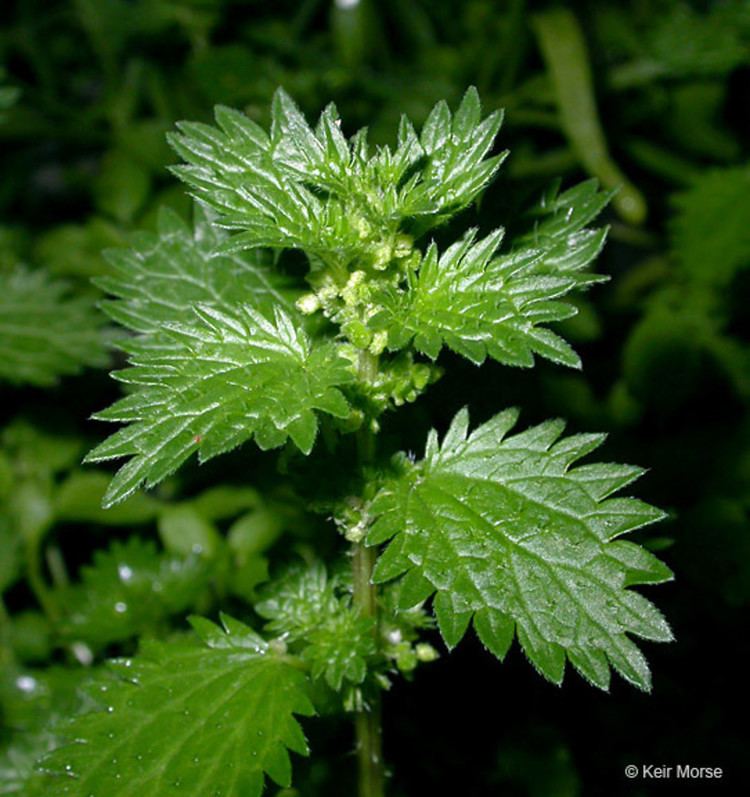 | ||
Lower classifications Common Nettle, Urtica urens, Urtica ferox | ||
Urtica is a genus of flowering plants in the family Urticaceae. Many species have stinging hairs and may be called nettles or stinging nettles, although the latter name applies particularly to Urtica dioica.
Contents
- Urtica dioica stinging nettle
- Description
- Species
- Ecology
- Uses
- Use as Food
- In folklore
- Myths about health and wealth
- Asian
- Caribbean
- European
- References
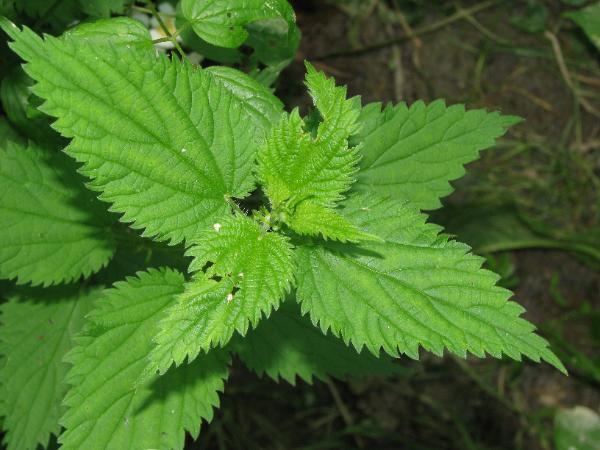
Urtica species are food for the caterpillars of numerous Lepidoptera (butterflies and moths), such as the tortrix moth Syricoris lacunana and several Nymphalidae, such as Vanessa atalanta, one of the red admiral butterflies.
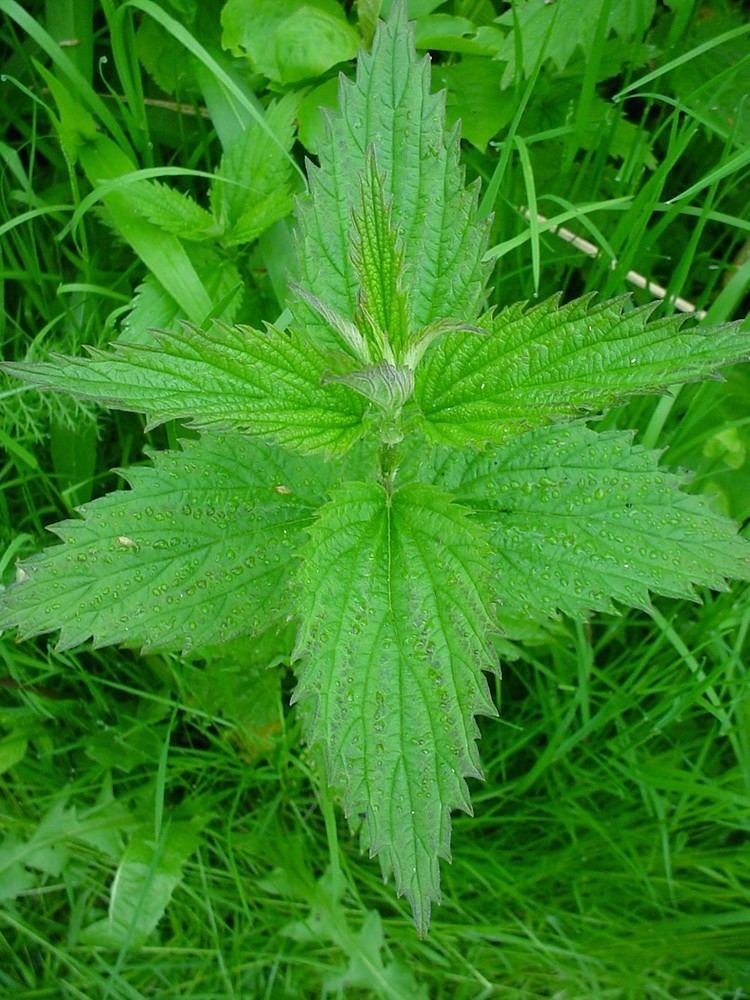
Urtica dioica stinging nettle
Description
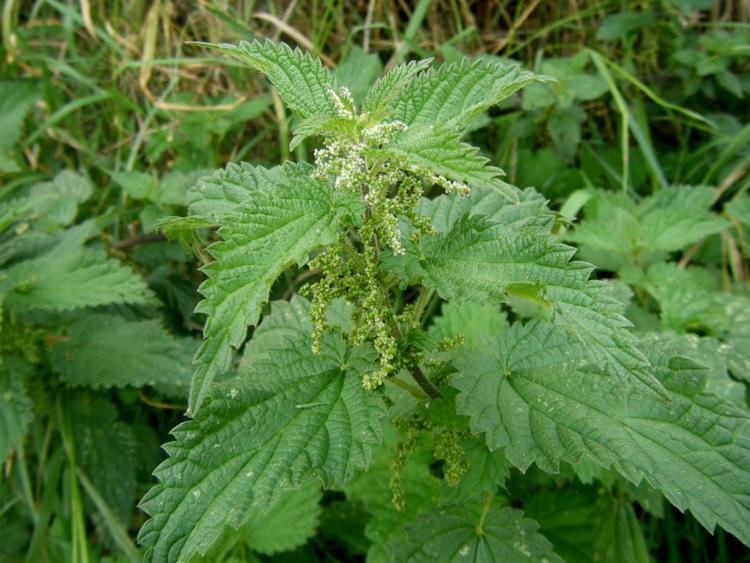
Urtica species grow as annuals or perennial herbaceous plants, rarely shrubs. They can reach, depending on the type, location and nutrient status, a height of 10–300 cm. The perennial species have underground rhizomes. The green parts have stinging hairs. Their often quadrangular stems are unbranched or branched, erect, ascending or spreading.
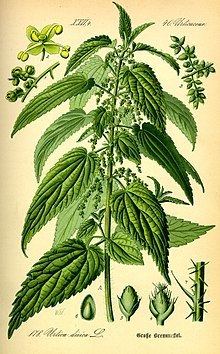
Most leaves and stalks are arranged across opposite sides of the stem. The leaf blades are elliptic, lanceolate, ovate or circular. The leaf blades usually have three to five, rarely up to seven veins. The leaf margin is usually serrate to more or less coarsely toothed. The often-lasting bracts are free or fused to each other. The cystoliths are extended to more or less rounded.
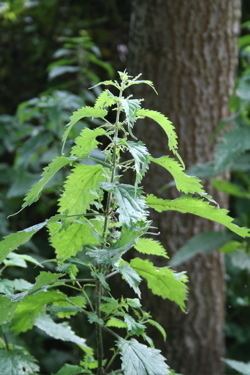
In 1874, while in Collioure (south of France), French botanist Charles Naudin discovered that strong winds during 24 hours made the stinging hairs of Urtica harmless for a whole week.
Species
A large number of species included within the genus in the older literature are now recognized as synonyms of Urtica dioica. Some of these taxa are still recognized as subspecies.
Species in the genus Urtica, and their primary natural ranges, include:
Ecology
Thanks to the stinging hairs, Urtica species are rarely eaten by herbivores, so they provide long-term shelter for insects, such as aphids, caterpillars, and moths. The insects, in turn, provide food for small birds, such as tits.
Uses
There is historical evidence of use of Urtica species (or nettles in general) being used in medicine, folk remedies, cooking and fiber production. Urtica dioica is the main species used for these purposes, but a fair amount also refers to the use of Urtica urens, the small nettle. Arthritic joints were traditionally treated by whipping the joint with a branch of stinging nettles, a process called urtication. Nettles can also be used to make a herbal tea known as nettle tea.
Fabric woven of nettle fiber has been found in burial sites dating back to the Bronze Age.
Use as Food
Urtica, called Kopriva (коприва) in Bulgarian and Urzica in Romanian, is a popular ingredient in spring soups, omelettes, banitsa, purée and other dishes in Bulgaria and in Romania.
See also nettle soup
In folklore
Nettles have many folklore traditions associated with them. The folklore mainly relates to the stinging nettle (Urtica dioica), but the similar non-stinging Lamium may be involved in some traditions.
Myths about health and wealth
Asian
Milarepa, the great Tibetan ascetic and saint, was reputed to have survived his decades of solitary meditation by subsisting on nothing but nettles; his hair and skin turned green and he lived to the age of 83.
Caribbean
The Caribbean trickster figure Anansi appears in a story about nettles, in which he has to chop down a huge nettle patch in order to win the hand of the king's daughter.
European
An old Scots rhyme about the nettle:
"Gin ye be for lang kail coo the nettle, stoo the nettleGin ye be for lang kail coo the nettle earlyCoo it laich, coo it sune, coo it in the month o' JuneStoo it ere it's in the bloom, coo the nettle earlyCoo it by the auld wa's, coo it where the sun ne'er fa'sStoo it when the day daws, coo the nettle early."(Old Wives Lore for Gardeners, M & B Boland)Coo, cow, and stoo are all Scottish for cut back or crop (although, curiously, another meaning of "stoo" is to throb or ache), while "laich" means short or low to the ground. Given the repetition of "early," presumably this is advice to harvest nettles first thing in the morning and to cut them back hard [which seems to contradict the advice of the Royal Horticultural Society].
A well-known English rhyme about the stinging nettle is:
Tender-handed, stroke a nettle,And it stings you for your pains.Grasp it like a man of mettle,And it soft as silk remains.In Hans Christian Andersen's fairy-tale "The Wild Swans," the princess had to weave coats of nettles to break the spell on her brothers.
